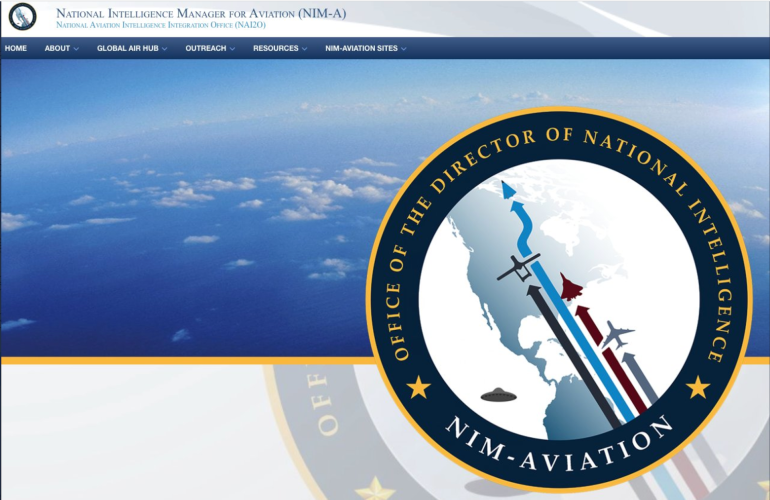What’s with the UFO on a U.S. intelligence agency seal?

Written by Suzanne Smalley
When the U.S. intelligence community’s main aviation component updated its seal recently to include images of a flying saucer and what appears to be a Russian fighter jet many wondered if it was a joke.
Turns out it may have been, but the leadership of the Office of the Director of National Intelligence does not appear to be amused.
A spokesperson there told CyberScoop in an emailed statement that its National Intelligence Manager for the Air Domain, also known as NIM-Aviation, “erroneously posted an unofficial and incorrect logo.”
So, no, the agency wasn’t hacked, as several people who spotted the seal also wondered.
NIM-Aviation serves as the Director of National Intelligence’s principal adviser on air domain issues, leading efforts to identify, analyze, and integrate intelligence on threats and vulnerabilities in the skies.
It is unclear when the updated seal was first released or first noticed by anyone outside of NIM-Aviation. But by Saturday news of the odd aspects of the seal became more widely known when UFO enthusiast and documentary filmmaker Jeremy Corbell noticed the logo and posted it on Twitter with the snarky caption: “Lazar UFO in the official seal? Hahahhahaha. Radical. I still can’t believe they did this.”
The seal was also analyzed carefully by the military community website Sandboxx, which noted how unusual it would be for ODNI‘s aviation outfit to include Russian weaponry in an official seal.
“Of course, it’s not uncommon for government agencies (from all over the world) to accidentally include depictions of foreign aircraft in official graphics, but it seems extremely unlikely that an intelligence organization specializing in aviation would make such a mistake,” the Sandboxx author wrote, noting that the seal’s fighter jet silhouette appears to match that of a Russian Sukhoi Su-57 Felon.
This article has been archived for your research. The original version from CyberScoop can be found here.


